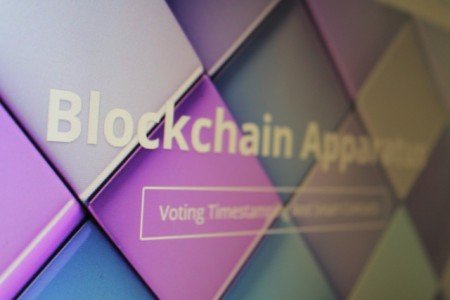A New-York based company specializing on voting machines, has recently announced developing a voting machine based on blockchain technology.
The Blockchain apparatus by Blockchain Technologies Corp. looks like a fax machine connected to a screen. The machine stays disconnected from the Internet to keep malicious actors from manipulating the votes as they are coming in, and burns the ballots to a DVD before it is connected to the Internet.
To make the system work, the voting ballot features three small QR codes sit at the bottom: one representing a blockchain address, which is like a unique cryptographic number; one representing the ballot ID; and one for the election ID. As the votes are scanned into the machine, each “vote unit” is transferred to the appropriate candidate.
Each candidate has a unique address, also called a wallet, which is how the machine knows where to send the votes. A tool called a blockchain explorer pulls up the information about each section of the ledger – each candidate.
Besides, the machine uses widely-available commodity hardware, so that broken parts can be replaced easily. The hardware for some voting machines is difficult to replace when the machines have been discontinued.
In the order of transparency, anyone in the world can look up candidates’ vote numbers in real-time, as this is one of the core strengths of blockchain. However, no individual voter’s personal information will be displayed in the process, as blockchain technology allows for privacy up to a certain level.
The Blockchain appartus’ blockchain-secured voting machine includes a paper trail for voters to examine to ensure the machine database is correct and has not been manipulated. If the blockchain data does not match the data on the DVD, because of error or manipulation, the paper ballots can be used to do a recount.
The configuration of the blockchain technology platform to be used is up to the agencies organizing the vote. This means that they can use either the Bitcoin blockchain or Blockchain Technologies Corp.’s alternative. The main difference between them is that the latter option does not require transaction fees.
According to advocates, blockchain based elections are transparent and secure. The Liberal Alliance in Denmark and the European Pirate Party have tested these elections.
next